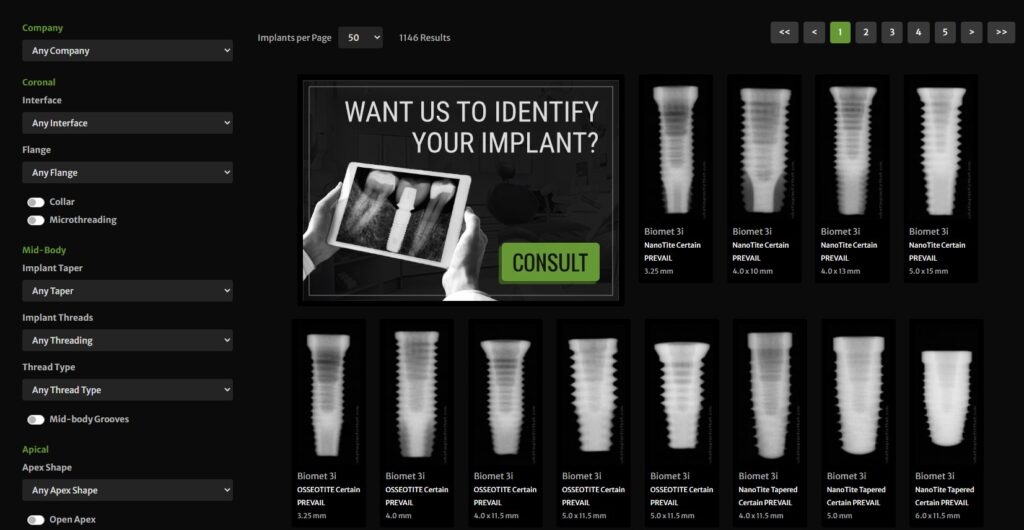What brand of Implant is that?
This is a great place to identify dental implant
The dental industry can use the free resource whatimplantisthat.com. Their goal is to make it easier for you to spot dental implants by simply looking at your patient’s radiographs. You’d be astonished at how many distinct qualities implants possess that set them apart from the thousands of implants available. Look through the hundreds of photographs they have and take a good-quality x-ray to identify the implant radiographically.

About "What Implant Is That?"
There are now more than a hundred different types of implants in use as a result of the popularity of implants in dentistry during the past 40 years. Each new manufacturer and design stands out from the competition thanks to a few distinctive features. As prosthodontists deal with a wide range of patients whose implants may need the dentist’s knowledge. The topic of “what implant it is” frequently arises because dentists are expected to understand how to restore these implants.
Sahiwal et al. published three articles in 2002 in an effort to clarify the confusion. According to their radiographic appearance, all implants were first categorised by the author: threaded versus nonthreaded, tapered versus nontapered, etc. The author provided charts that showed which implants had each of these different qualities. Despite the fact that the data is presented in the article, the sheer amount of data does not allow for the simple incorporation of this categorization into routine practise. This makes it challenging for a practitioner to quickly search through the hundreds of implants to find the information he needs while holding a radiograph.
Thanks to the current information technology, the same information is available in a fashion that would speed up and simplify the radiographic identification of dental implants. They have created a reference that enables users to browse through the enormous number of implants by identifying important characteristics by creating a database of radiographic pictures connected to the numerous differentiating qualities using a search engine-like capability. Integrating the radiographs of every implant also enables visual verification. By moving this resource online, clinicians would have rapid and simple access to this knowledge, making integration into practice viable.
